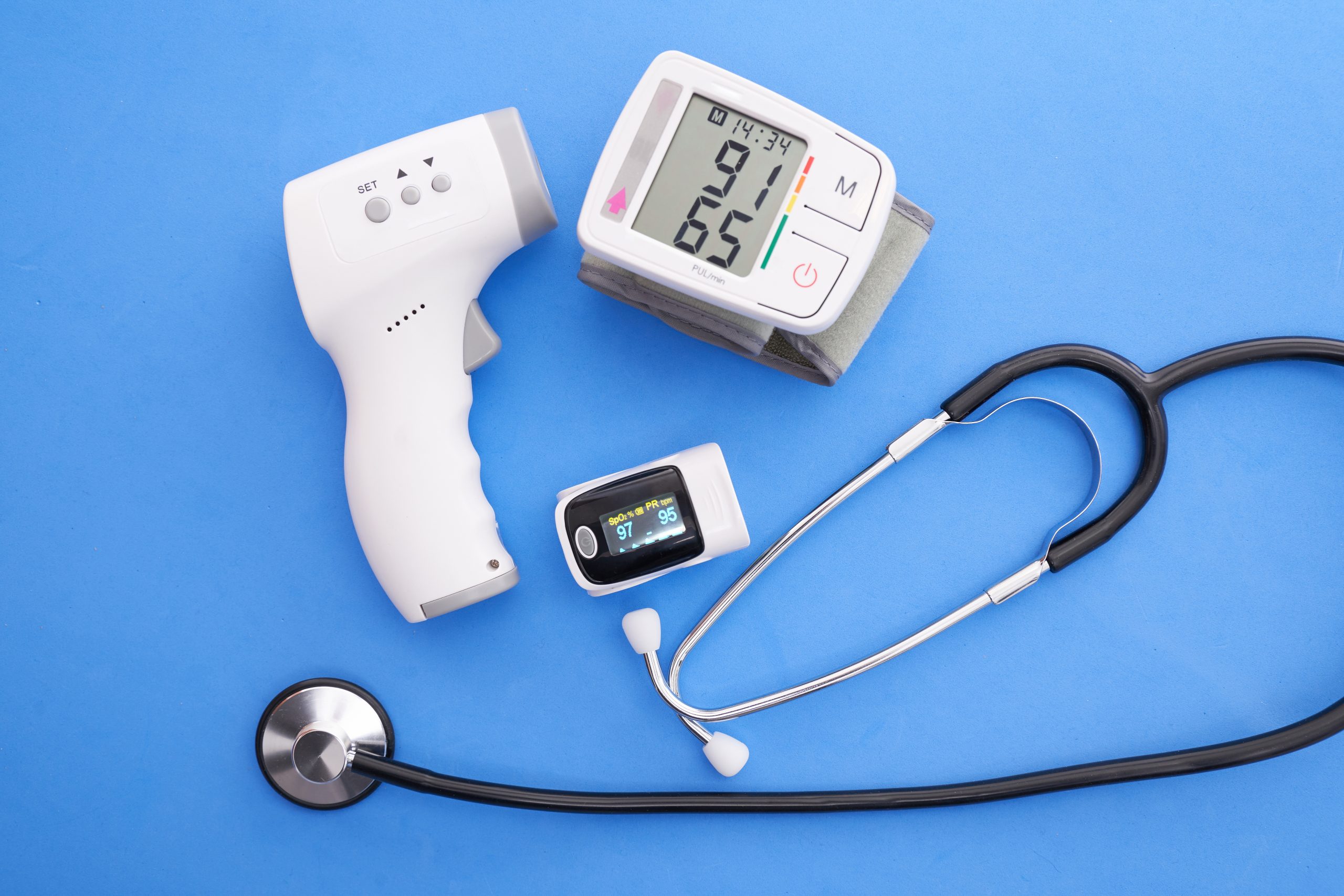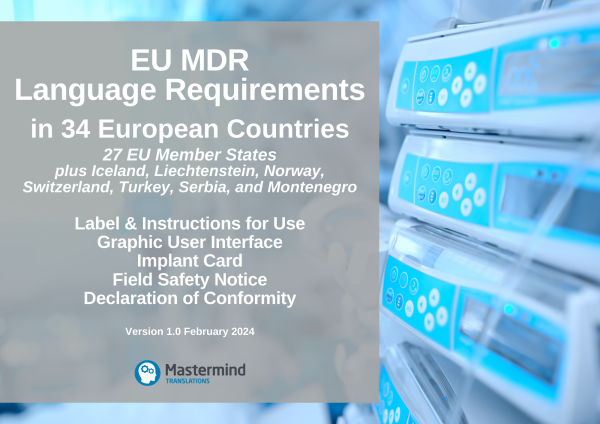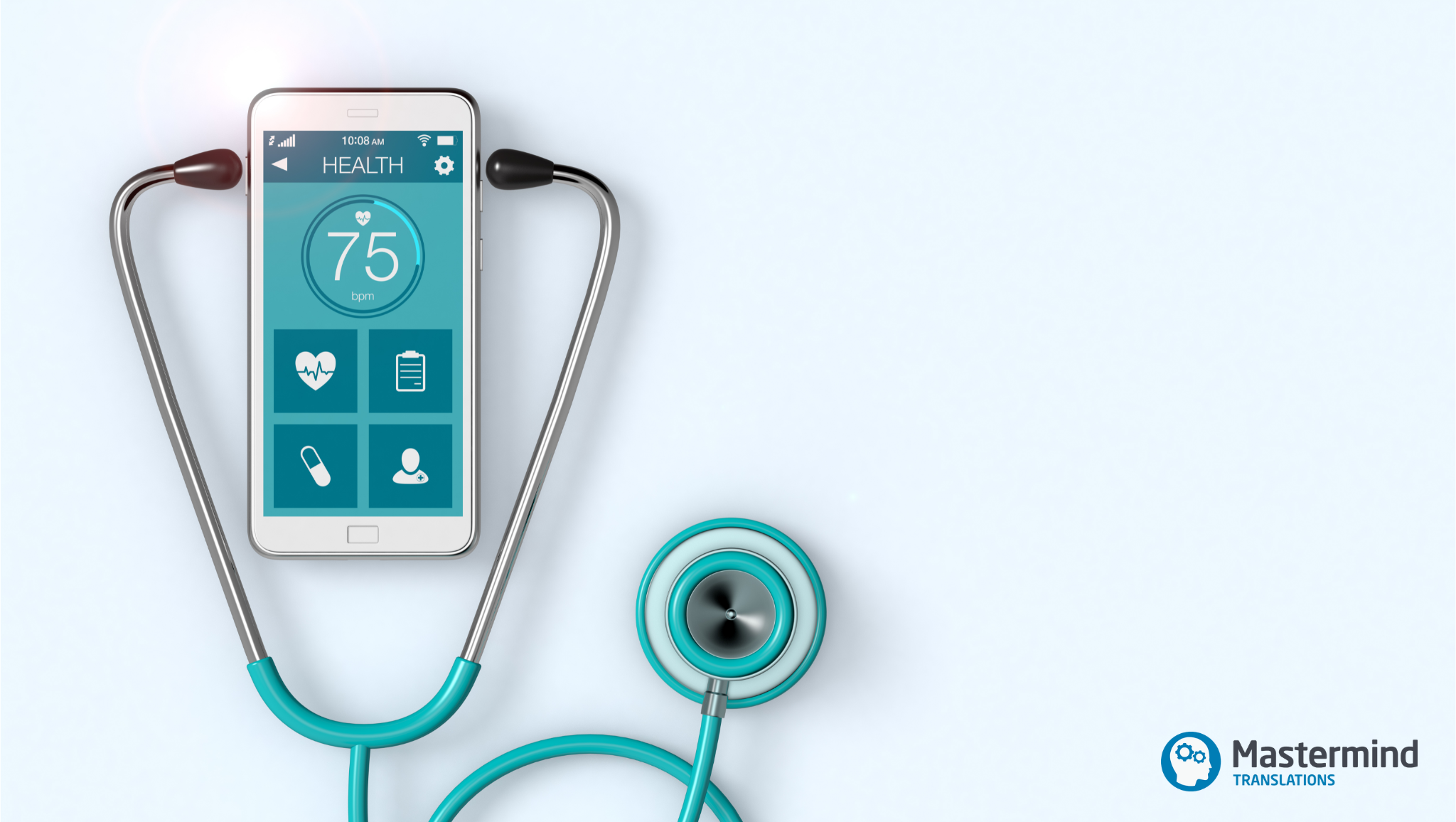Are you a medical device company preparing to place your products on the European market? The new European Union Medical Device Regulation (MDR) and In Vitro Diagnostic Medical Device Regulation (IVDR) introduce language translation requirements that might leave you bewildered, especially if you are new to the EU market. Navigating the intricacies of these new regulations and finding definitive answers to your questions, often very specific to your unique circumstances, can quickly become a challenging and time-consuming task for you and your regulatory team. The absence of clear guidance can lead to frustrating searches, yielding ambiguous results open to interpretation.
We frequently receive queries from medical device manufacturers concerning the mandatory language requirements for their products under the MDR and IVDR. As you navigate the complex EU regulatory environment and seek solutions to your questions, the wisdom of hands-on experience and tried-and-tested practices become invaluable assets. In this article, we delve into these complexities by sharing insights gained from our discussions with medical device companies spanning the EU, Korea, Japan, and the USA that have successfully placed their products on the European market.
Question 6: Do we need to make the translated IFU available on our website?
Question 1: We are a Korean medical device company with no prior experience of medical device translation for the EU market. What are the new EU MDR language requirements that apply to our products?
There are three language-level requirements that manufacturers must comply with:
- EU Level: These are the generic language requirements set out in the MDR.
- National Level: These are more specific language requirements and recommendations set by individual EU Member States in response to the MDR.
- Device Level: These are language requirements specific to the device.
MDR Article 10(11) mandates that the information accompanying your medical device must be in the official languages of the EU Member States where the device is made available to the user or patient. Section 23 of Annex I defines this information as the information needed to identify the device and its manufacturer, as well as any safety and performance information present on the device, its packaging, or in the instructions for use (IFU). There are 24 official EU languages, but you need to consider the language requirements only in the national markets where you place your device. Each EU Member State determines the language(s) it will accept at the national level through supplementary national medical device legislation and/or official guidance issued by its Competent Authority. Furthermore, the language requirements may vary within each EU Member State based on factors, such as the intended user (lay vs. professional use), content type (safety-related information or not), or device classification. Identical language requirements apply to IVDs.
Question 2: We are already selling our products in several EU countries, but would also like to explore opportunities in other European countries. Which European countries follow the EU MDR language translation requirements?
The MDR, being an EU regulation, directly applies to all 27 EU Member States. Furthermore, it extends its reach to Iceland, Liechtenstein, and Norway, as these countries are part of the European Economic Area (EEA) and have integrated the MDR provisions, including its language requirements, into their national medical device legislation. Switzerland and Turkey, while not EU or EEA members, have also aligned their national medical device laws with the MDR, to simplify access to the European single market. Additionally, several EU candidate countries, such as Montenegro and Serbia, have taken proactive steps to harmonise their national medical device laws with the MDR in preparation for accession.
Question 3: How does the EU MDR affect the translation process, and what measures can we take to ensure translation accuracy?
The MDR and IVDR do not establish specific requirements for the translation process itself.
However, ensuring the accuracy and clarity of your IFU in all language versions is essential for patient safety and the prevention of in-use errors. According to the MDR Annex I, Section 23.1(a) “instructions for use shall be written in terms readily understood by the intended user”.
To streamline the translation process, ISO 17100:2015 “Translation services — Requirements for translation services” offers a systematic approach by defining requirements for the translation process and linguist selection. An often-overlooked yet critical step in this process is the independent review of the translation, which identifies and rectifies translation errors, ambiguities, and omissions. This review, performed by a second linguist, is a mandatory part of the translation project lifecycle. Additionally, linguists involved in the project as translators or reviewers must be native speakers of the target language, possess the six competencies outlined in the standard, and meet professional qualification and experience criteria.
For manufacturers aiming to ensure accurate IFU translations, it is crucial to begin with high-quality source documents. Professionally written documentation serves as an anchor for maintaining quality right from the start. This approach enables precise content management and facilitates reuse, ultimately enhancing consistency and minimising ambiguities. Keep in mind that the quality of your translations is closely tied to the original IFU. Therefore, a robust electronic Quality Management System (eQMS) for document management, such as MedDEVICE by Cognidox, becomes indispensable.
Manufacturers can further enhance accuracy by collaborating with Language Service Providers (LSPs) that leverage cutting-edge technology solutions, including translation memory and translation management software. These tools not only enhance efficiency and consistency in the translation workflow but also contribute to cost-effectiveness.
Question 4: Our device is intended exclusively for healthcare professionals. Do we need to translate the IFU into all the national languages of the European countries in which we want to sell it?
To facilitate market access, a number of European countries have waived their national language requirements for devices intended exclusively for healthcare professionals. This means that the information supplied with your device can instead be provided in English in the following countries: Austria, Belgium, Croatia, Cyprus, Estonia, Iceland, Liechtenstein, Luxembourg, Netherlands, Poland, Romania, and Switzerland. However, these exemptions may come with conditions. For example, in Estonia and Romania the professional user should consent beforehand to the information being provided to them in English only. You should check the exact exemption criteria for your chosen national markets as they vary. In addition, some countries, such as Germany and Finland, allow English for any information that is not strictly necessary for the safe use of the device.
Question 5: Is it mandatory to include the original version of Instructions for Use (IFU) with its translations in the packaging?
Since neither the MDR nor IVDR explicitly mandates this, including the original IFU in the packaging is optional. However, as confirmed in MDCG 2021-26 the translated IFU must always be an exact translation of the original version provided by the device manufacturer.
Question 6: Do we need to make the translated IFU available on our website?
Annex I Section 23 of the MDR states very clearly that if the manufacturer has a website, the information needed to identify the device and its manufacturer, and any safety and performance information relevant to the user or any other person, as appropriate, must be made available and kept up to date on the website. According to Article 10(11) this information must be in all the language versions accepted in the national markets where the device is made available to the user or patient.
Question 7: How should we interpret the EU MDR language requirements for the graphical user interface (GUI)?
This is one of the most common questions we are being asked. The MDR makes no explicit reference to the graphical user interface (GUI) of a device.
Article 10(11) of the MDR requires that “the device is accompanied by the information set out in Section 23 of Annex I in an official Union language(s) determined by the Member State in which the device is made available to the user or patient.” This information that must accompany the device is defined in Section 23 of Annex I as “the information needed to identify the device and its manufacturer, and any safety and performance information relevant to the user, or any other person, as appropriate.” Such information may appear on the device itself (as part of the GUI), on the packaging, or in the instructions for use. Therefore, the language requirements under the MDR apply to all safety and performance information accompanying the device that is relevant to the user. This includes any safety and performance information relevant to the user, which is provided as part of the GUI.
This question is somewhat similar to the issue with text appearing on a screen of the IVD or in standalone IVD software, which was raised by the medical device industry last year. In June 2022, MedTech Europe published a position paper defining whether such text should fall within the scope of Article 10(10) of the IVDR, which is almost identical to Article 10(11) of the MDR. The conclusion was that it does not need to be translated unless it contains information defined in Section 20.4 of Annex I ‘Information in the instructions for use’ (which is similar to Section 23.4 of Annex I of the MDR). The position paper recommends a risk analysis to determine whether the information in question is necessary for the safe and proper use of the device.
The general interpretation is that if the GUI contains safety and performance information relevant to the user, as defined by Section 23 of Annex I, then the MDR language requirements will apply to it. The exact official Union language or languages required for text appearing as part of your GUI will depend on the national markets in which your device is going to be placed.
This interpretation aligns with the information published by the European Commission in January 2024. In response to the MDR, only 16 European countries have specifically addressed language requirements for the user interface, which covers the GUI.
For devices indented for lay users, Hungary, Latvia, and Poland allow the GUI to be in English if the concepts are explained in the national language in the IFU or another document supplied with the device, provided that this does not pose a risk to the user of the device. The Competent Authority in Hungary recommends conducting a risk analysis to establish this.
As explained in Question 4, if your device is intended solely for healthcare professionals, in many EEA countries, the accompanying information, including any textual elements of the GUI, can be in English only. Furthermore, several countries make exceptions specifically for the GUI and accept it in English as long as the IFU in the national language is provided with the device. For each market where your device is available, you will need to consult the country’s national medical device law or guidelines to see which language is acceptable.
Question 8: Do the same language requirements apply to the field safety notice (FSN) and the EU declaration of conformity (DoC)?
The MDR extends its translation requirements to other documents related to medical devices. Article 89(8) requires that the field safety notice (FSN) should be edited in an official language or languages of the EU determined by the Member State in which the field safety corrective action (FSCA) is taken. Since the FSN contains critical safety information intended for the end-user, most EU Member States require that it is presented in their official national language(s).
Unlike the information accompanying the device and the FSN, the EU declaration of conformity (DoC) is a regulatory document and does not contain any safety or performance information for the user. For this reason, most EU Member States offer a level of flexibility in response to the MDR translation requirements for the DoC, and accept a version in its national language(s) or English.
Question 9: Should we request a Letter of Confirmation from our Language Service Provider (LSP) when our IFU translations are completed?
As the MDR places significant emphasis on quality management and supply chain transparency, it underscores the importance of employing robust quality management systems for medical device translation. Hence, it is advisable to request a Letter of Confirmation (LoC) from your chosen LSP. This document serves as proof of the successful completion of the translation project, offering comprehensive insights into the project’s lifecycle and the specific quality assurance processes applied. It verifies that the translation aligns with ISO 17100:2015, which necessitates the core translation process, encompassing translation, revision, and final verification, to be independently executed by qualified linguists.
As you navigate the ever-evolving terrain of the MDR and IVDR, we hope that this FAQs article has shed light on some of the complexities and provided valuable insights into the language translation requirements, whatever your medical device translation needs are.
The field of medical devices thrives on collective knowledge and shared experiences, which are pivotal for continuous improvement. We encourage our readers to actively participate in this ongoing conversation. Whether you have valuable insights, experiences, or pressing questions concerning medical device language translation requirements under the MDR and IVDR, your contributions to this dialogue can greatly benefit others.
By opening the floor to discussions, we can collaboratively nurture a well-informed and prepared community of medical technology companies in their journey to introduce safe and effective products to the European market. We invite you to share your thoughts and queries in the comment box below.
Please note that the information on the translation requirements related to medical devices in the EU provided in this article is for guidance only and does not constitute professional regulatory advice. Ensuring a high standard of safety and quality for medical devices in Europe is the responsibility of the manufacturer. For specific questions related to regulatory compliance of your medical device or IVD, we recommend seeking assistance from a QA/RA specialist or a relevant competent authority.







